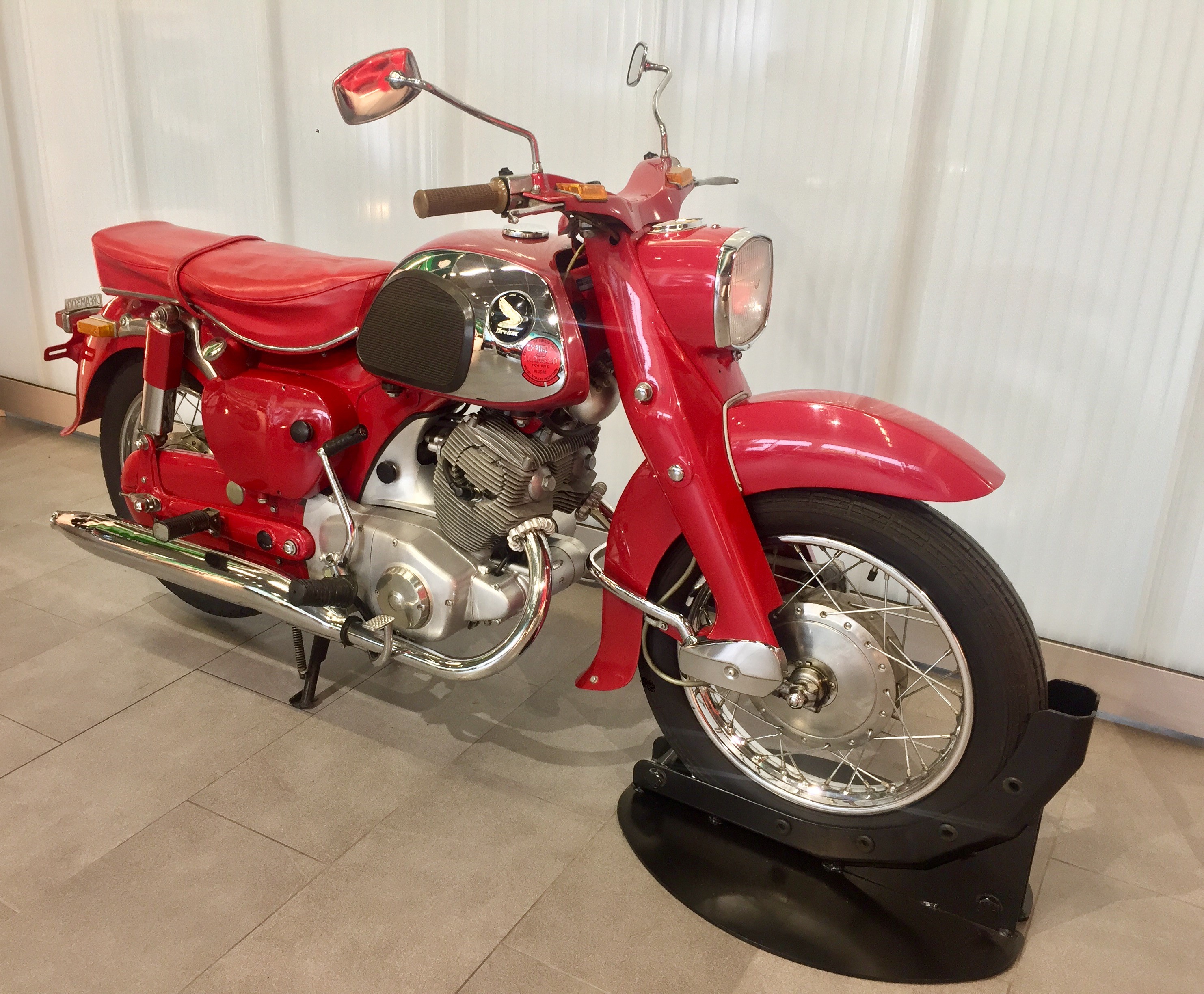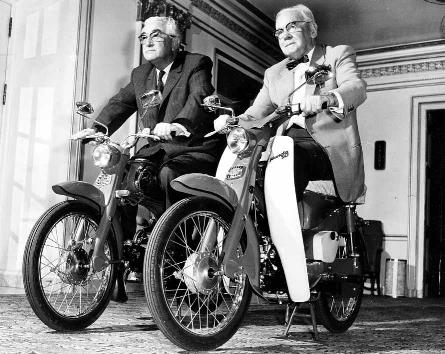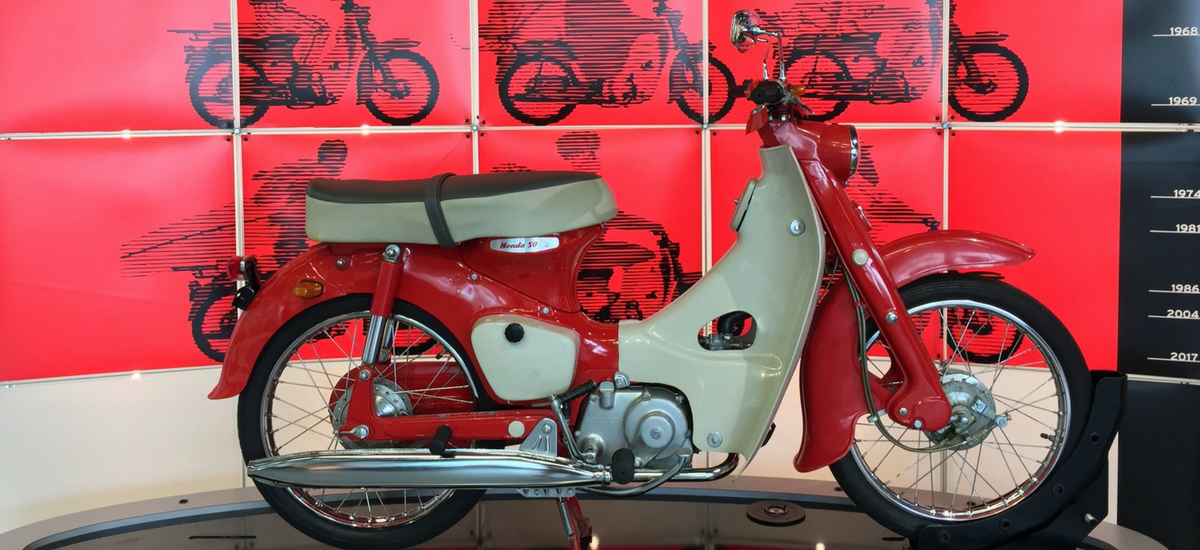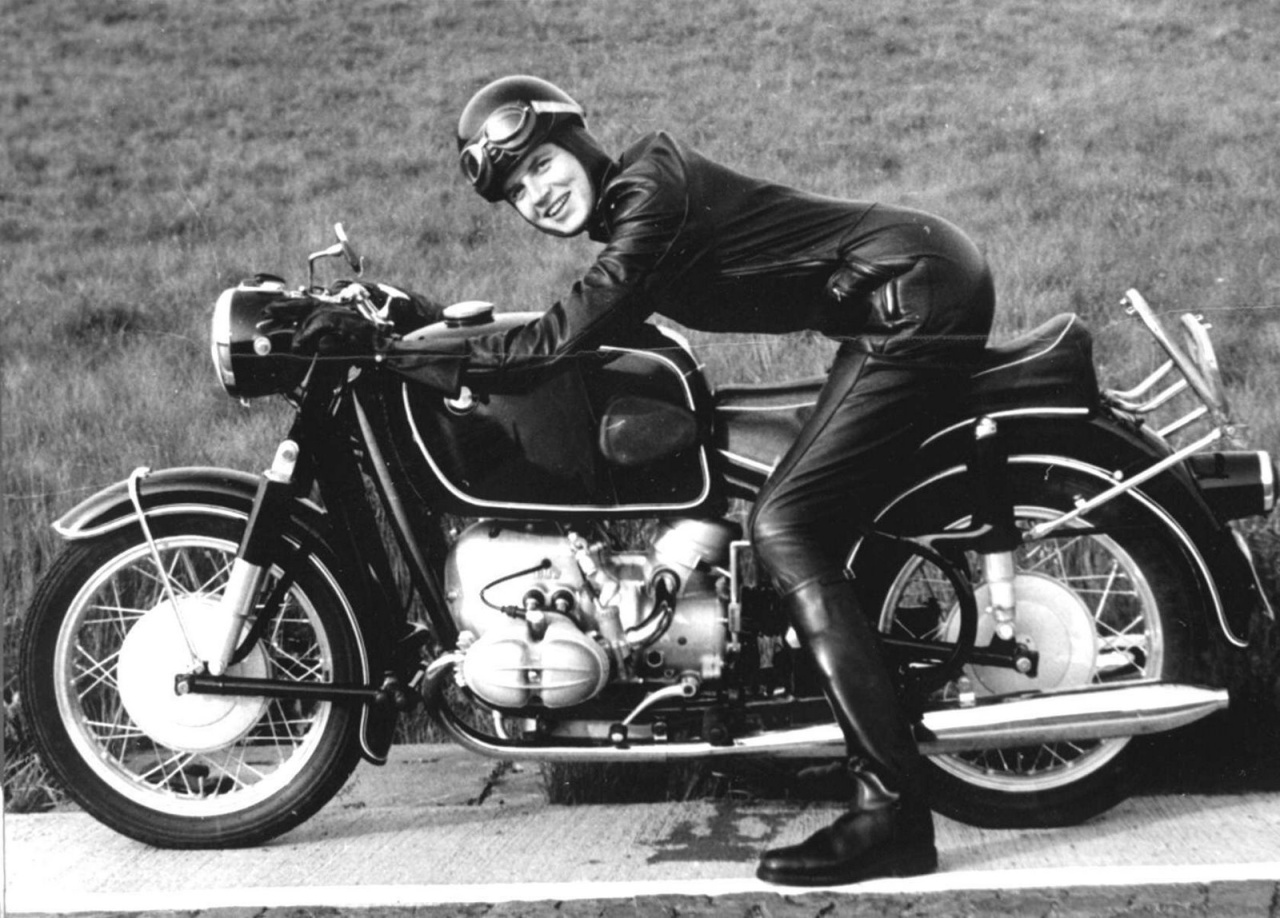Many know Trev Deeley through his connection to Harley Davidson and the legacy he brought to the company by being the first distributor of the Milwaukee company in Canada, but not many know that he was also the first distributor of Honda motorcycles in the English-speaking world. In 1957, four years after being appointed general manager of Fred Deeley Motorcycles, Trev came upon an article about a U.S. soldier who had fought in Japan who brought back with him a 250 cc motorcycle made by the Honda Motor Company in Tokyo.

Intrigued, Trev sent a letter to the president of the Honda Motor Company indicating that British Columbia and Japan shared some similarities which could make for a profitable market for the company. This led to a correspondence with the company that resulted in Honda sending Trev a free 250 cc Honda Dream. Regardless of struggling to convince Fred Sr. and Jr., Trev was impressed with the craftsmanship and performance of the bike and became the first distributor of Hondas in the English-speaking world, primarily ordering 50 cc Honda Cubs.

With the Deeley Motorcycle Exhibition’s new exhibit “100 Years of Motorcycling”, we hoped to highlight motorcycles that have made some sort of mark over time, and both the 1960 Honda Dream and the 1963 Honda Super Cub are glowing examples, being the first two models of a Honda Motorcycle tested and distributed by Trev Deeley to an English-speaking market.

Although the 1960 Honda Dream holds significance for being one of the first models of Honda motorcycles to come to the Western world, the Honda Super Cub, which Trev first began distributing, has made great strides, becoming the most produced motor vehicle in history with production passing 100 million units in 2017.
Come check out these incredible bikes and learn a deeper history at the Deeley Motorcycle Exhibition’s newly installed display, “100 Years of Motorcycling”!



